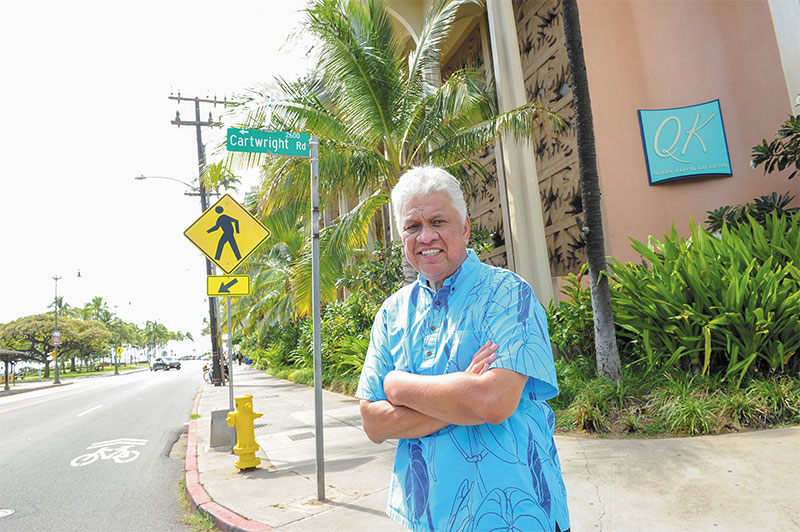Malama Is The Way

If anyone knows how to care for locals, the islands and their visitors, it’s John De Fries, who is thriving as president and CEO of Hawai‘i Tourism Authority
When John De Fries applied to be president and CEO of Hawai‘i Tourism Authority last year, he remembers listing his two alma maters on his résumé: Punahou School and Thomas Jefferson Elementary School.
“How many executive positions put their elementary school?” he muses. Born and raised in the mecca of Hawai‘i tourism — Waikīkī — De Fries spent his formative years on the state’s iconic beach.
“Where Queen Kapi‘olani Hotel is, that’s the street I grew up on,” recalls De Fries, who took the helm of HTA last September. “Being born and raised here, there’s this connection to the place and to the people, and a respect for the multiethnic societal fabric that constitutes our way of life as kama‘āina.”
In directing the state’s No. 1 industry, De Fries has the opportunity to lead and guide others using the same type of hospitality he was raised with.
The 1969 Punahou grad got his start in the state’s most lucrative industry four years later as a tour director for one of the major companies. A 22-year-old De Fries served as an ambassador of aloha, leading visiting groups around the island — or islands, depending on the package — and giving them an in-depth look at Hawai‘i through his eyes.
“When you’re in that role, you actually live with the visitors you’re traveling with, you become familiar with every segment of their experience,” he says, noting that being a free-spirit and single at the time allowed him this opportunity as a young adult. “A big part of that experience was recreational, and you get to relate to the visitor on an intimate level.”
After a handful of years, De Fries’ efforts elevated him to a department management position, and that work experience became what he now calls “the college I never went to.”
“Academically, it was almost like I was allergic to it,” he says, with a hint of a smile. “I had more parking tickets than credits.”
His first taste of the state’s visitor industry left him wanting to learn more, and he set his sights on understanding how hotels were developed. He took his talents to a local company that was building three properties — two on Maui and one on Kaua‘i — and was able to learn the ropes in real estate and resort development, as well as construction. The latter, De Fries adds, came more naturally to him because he worked for a construction company in the early 1970s building swimming pools.
His comprehensive understanding of the industry is unparalleled, and makes him the perfect person to lead HTA into the post-coronavirus era with a focus on regenerative tourism. To accomplish this, he claims one must have a mālama mindset.
“We mālama the visitor, but in turn educate them on how to mālama us as a people, place, as an island society,” De Fries says. “At the same time, we need to run a vibrant economy. This reciprocity is embedded in our Hawaiian culture, in our kama‘āina ways.”
The way De Fries sees it, the fundamentals of the tourism industry haven’t changed. It remains a relationship-based way of life in which trust still is the major currency.
“I clearly understand that in tourism, we are the hosts,” he adds. “And the host carries a certain set of responsibilities.”
Added to that influence is the knowledge that he’s the first Native Hawaiian to hold the organization’s top leadership role, though De Fries assures he won’t be the last. It carries for him an increased sense of accountability.
“A very close Hawaiian friend of mine said to me, ‘Our children need to see you succeed,’” recalls De Fries, whose primary residence is in Kona. “When he said that, the magnitude of it really hit me.”
De Fries doesn’t have any children of his own — “I didn’t go through that paternal experience,” he says — but rather is a self-proclaimed “world’s greatest uncle.” Instead of offspring, though, he sees his legacy live on in Hawai‘i’s generations to come and how they positively impact their communities.
“We will care for and protect — mālama — those things that we aloha most,” he concludes. “We have the capacity to love our homes, our places of birth, our families, and what regenerative tourism is based on is this visceral connection that we love Hawai‘i, and we must nurture and protect (it).”

